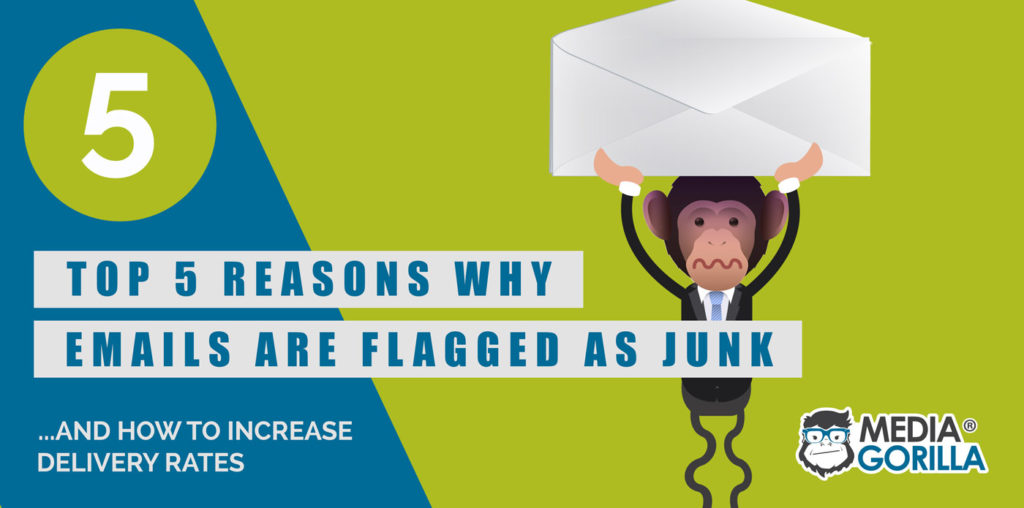If your customers and contacts are feeding back to you that your emails are being flagged as spam, it can often be hard to track down the specific source of the problem. There are numerous reasons why this can happen. Provided that you are not on a shared platform that has been blacklisted, here are the 5 most likely ways your emails could be landing in junk folders:
1. Sending unsolicited emails. Marketing emails sent to businesses whom you have no direct connection or relationship with yet. They are more likely to mark your mail as spam which not only stops their inbox from getting further emails from you but can also count towards preventing every person using the same Internet Service Provider as them from receiving your emails in their inbox. When people mark an email as junk, some ISP’s can be notified and once a threshold is achieved, then all emails from that email address will go to the junk folders of everyone using the same internet service provider.
2. ‘Spammy’ subject lines. Words like FREE, OFFER etc in the subject line is a red flag for ISP’s. Also capitalising all words in the subject line seems to increase the spam score of emails, perhaps because it is not natural writing so safer to keep to Sentence case for subjects.
3. ‘Spammy’ text in the message body. Same as number 2 for words used, but within the message body, unless your recipient has already replied back to you on at least one occasion as this notifies the ISP that your email address is trusted by them.
4. No text content. Sending an image with no accompanying text, particularly when it is the first contact with your email recipient.
5. Free email addresses and/or overzealous company firewalls/spam filters. You can adhere to the general principles of ethical emails and still get caught in the spam filters of free email services such as Gmail, Hotmail, Yahoo etc simply because their spam filters are so strict due to the volume of spam they have to deal with daily. Same with some company spam filters. When this is identified, ask the recipient to whitelist your email or mark it as not spam/junk so that further emails arrive in their inbox.
Email marketing requires a proper strategy and shortcuts will lead to pain in the long run as ISP’s look to cut down on the vast amount of spam reaching inboxes daily.
And be aware of GDPR regulations to decide whether you can legally send that email in the first place!

